Patient-Reported Outcome Measures
Read the Magazine in PDF
Abstract
The article highlights the significance of patient-reported outcomes (PROs) in healthcare, promoting patient-centered care. It explains what PROs are, their relevance, and their impact on personalized medicine and research. Successful Patient-Reported Outcome Measures (PROMs) programs are discussed, along with a case study from Sheba Medical Center. The article emphasizes the importance of collecting high-quality PROM data to enhance patient care.
Introduction
Over 12 years, Partners Healthcare in Boston has prioritized patient-centered outcomes, driving a shift towards value-based healthcare. Patient-reported outcomes (PROs) play a central role, enabling personalized care, maximizing value, and informing research. This paradigm shift is crucial for delivering affordable and relevant care amid rising healthcare costs. Successful initiatives have inspired similar projects, like Sheba Medical Center in Israel.
These are:
- Maximizing value
- Providing patient-centered care
- Offering personalized medicine
- Conducting comparative effectiveness research
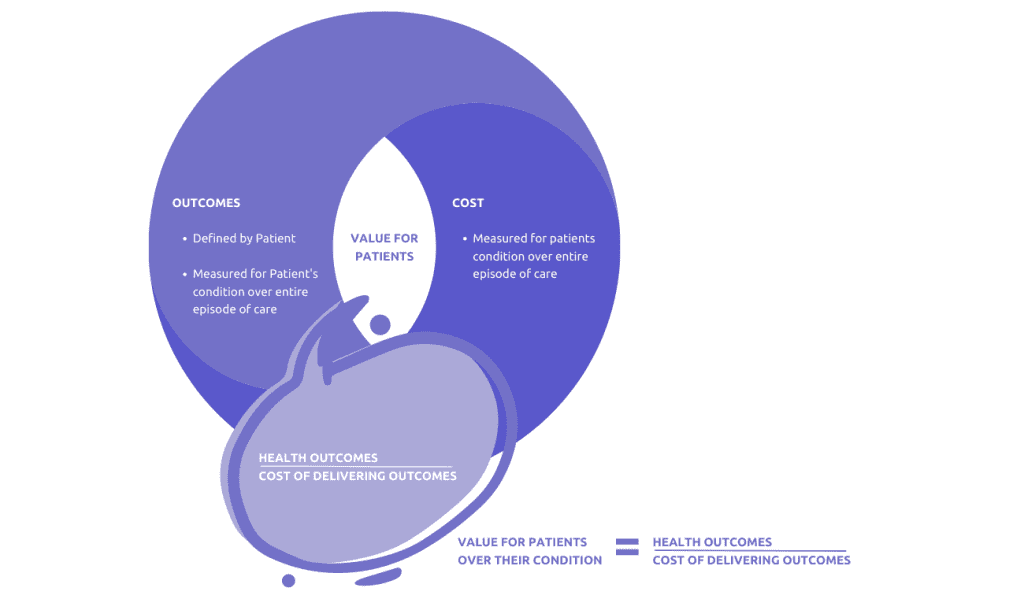
Partners Healthcare shifted towards value-based healthcare, considering outcomes that matter to patients. Patient-reported outcomes (PROs), advocated by Professor Michael Porter, are crucial in improving patient value. While not yet widespread, incorporating PROs into routine care can better address patients’ needs and enhance the value delivered in healthcare.
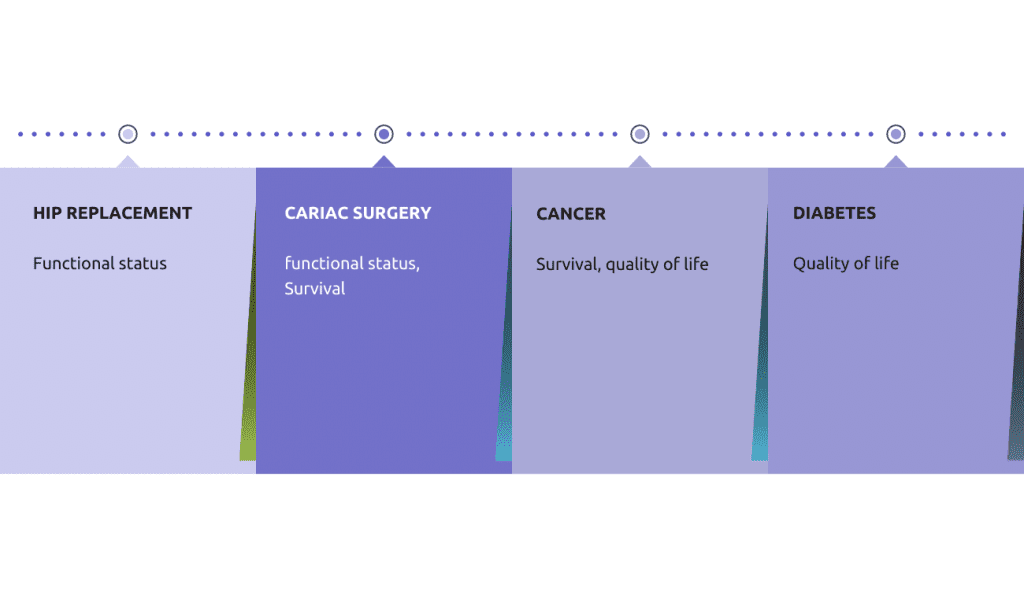
What are patient-reported outcomes?
Patient-reported outcomes (PROs) are direct reports on health conditions, measured using standardized tools called PROMs. Examples include EQ5D for generic quality of life, HUS and KUS for joint replacements, Kansas City questionnaire for cardiac patients, PHQ-9 for depression, SF36, SF12, and PROMIS for generic and disease-specific options. The PROMS program offers a wide range of validated PROM tools in multiple languages, available for free on their website.
Why PROs?
The Dartmouth Spine Center was a trailblazer in using patient-reported outcome measures (PROMs) for spinal surgery and back pain treatment.They implemented a tablet-based system in 2001 to collect patient data on medical history, symptoms, and functional ability. The data generated personalized reports, displaying the patient’s functional status, pain intensity, and goals. Aggregated data from multiple patients was also analyzed and made available on their website, allowing patients to compare outcomes between surgical and non-surgical treatments. The results showed that surgical patients had better pain scores and functional status. This empowering resource facilitates shared decision-making in back pain treatment by offering real-world outcome data for informed choices.
Why should we measure and use PROMs?
PROMs have diverse applications, grouped into four categories:
- Monitoring individual patient outcomes and gaining insights from aggregated data.
- Tracking symptoms over time, aiding patients with chronic conditions or undergoing chemotherapy.
- Supporting shared decision-making between patients and doctors.
- Contributing to precision medicine by tailoring treatments based on aggregated data.
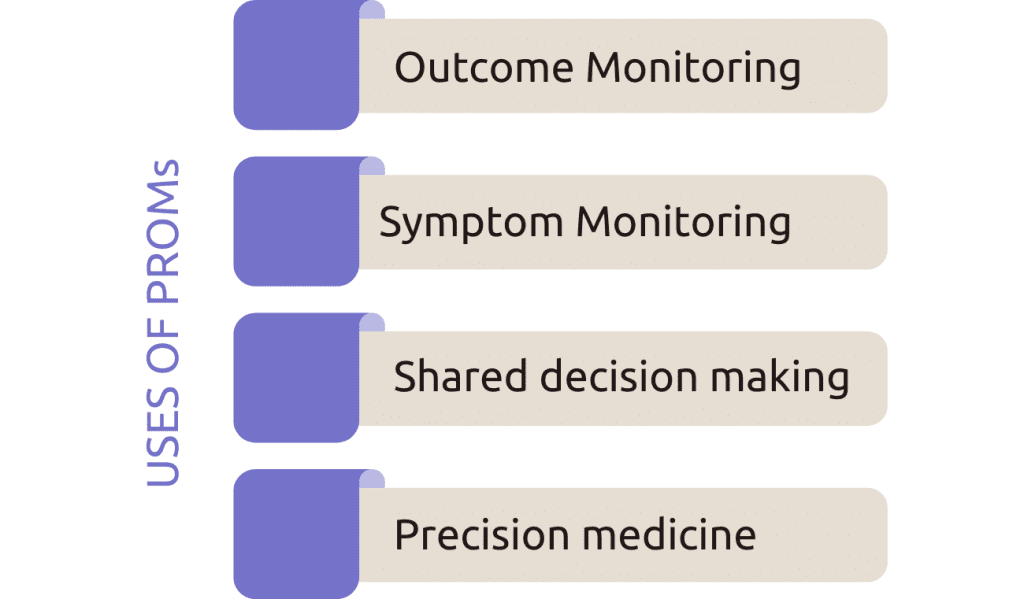
Let us look at an example from Martini Clinic that demonstrates the use of PROMs for outcome monitoring. Martini Clinic is an integrated practice unit that provides treatment for prostate cancer. They use PROMs to track the progress of their patients and identify areas for improvement. By analyzing the data, they can identify which treatments are more effective and adjust their approach accordingly.
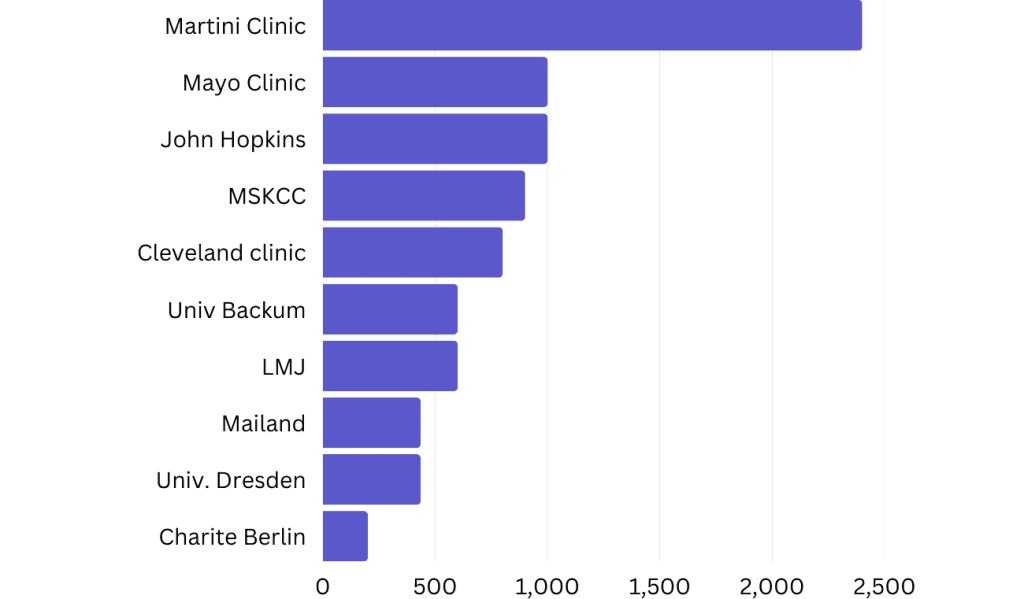
The Martini Clinic Case Study
Martini Clinic in Hamburg, Germany, specializes in prostate cancer treatment, prioritizing patient outcomes. With twice the prostatectomy rate of renowned clinics, they focus on continence after surgery. By using patient-reported outcomes (PROMs), individualized improvements were made, achieving continence rates of over 90%. While 100% continence wasn’t reached, their emphasis on PROMs led to significant advancements.
Frequency of continence, 1 year post radical prostatectomy

Data comparisons with national averages show Martini Clinic outperforms in continence rates and reduces severe erectile dysfunction and incontinence. Partners Healthcare’s PROMs platform is one of the world’s most advanced, accessible to patients via the Mass General Brigham patient portal. It offers insights into post-total knee replacement outcomes.
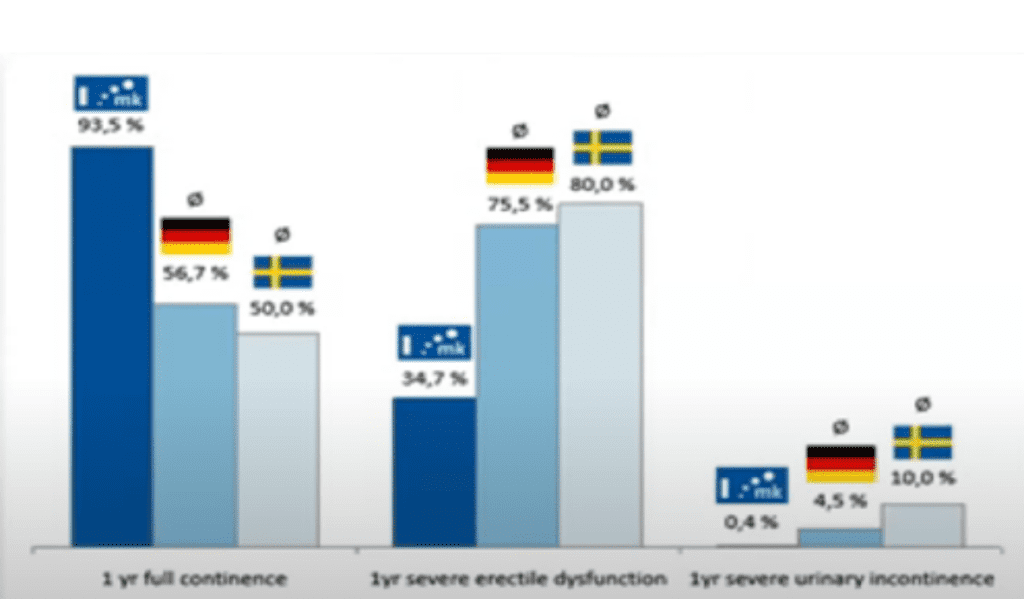
Partners Healthcare offers patients access to monitor their post-knee surgery progress on the website. Pain relief improves rapidly in the first 120 days after surgery, with continued but slower progress until around 250-260 days. This information is valuable for patients seeking relief and progress expectations after knee replacement surgery.

Sheba medical centre
Sheba Medical Center, Israel’s largest hospital, boasts 2,000 beds, an acute care hospital, a rehabilitation hospital, and a children’s hospital under one leadership. Newsweek ranked it ninth in the world in 2020 out of 2,000 evaluated hospitals.
Attributes of a successful PROM programme
- Attributes of a Successful PROMs Program:
- Include both generic and disease-specific tools.
- Ensure a response rate of at least 60%.
- Use a multi-modal electronic data capture approach.
- Give patients access to PROM data.
- Integrate PROM data with other valuable metrics.
Sheba Medical Center uses a multi-modal data capture approach in its successful PROMs program.
To achieve at least 60% compliance, a flexible data collection process is crucial. Offering multiple options like tablets, pen and paper, mobile apps, and patient portals can capture patient data effectively.

At Sheba, data on coronary artery disease patients were collected using computerized evaluations on tablets during hospitalization and follow-ups at 30 days, 3 months, 6 months, and 12 months. In acute cases like ST elevation MI, data collection occurs post-procedure to avoid treatment delays.
Patients complete questionnaires from home at designated time intervals (e.g., one, three, and six months after the procedure). The process is straightforward, with an email link provided for easy access.
The smartphone app enables patients to answer questionnaires and receive notifications for PROMs at predetermined intervals. Integrated into the electronic medical record, the app offers a user-friendly and efficient way for patients to participate in data collection, despite most content being in Hebrew.
Comparing surgeons or groups in cataract surgery can assess outcomes like physical and mental function, visual function, and reported vision outcomes. If no significant differences are found between the groups, it is politically favorable, avoiding complexities in implementation status.
The patient report for coronary bypass surgery includes metrics like mental and functional status, chest pain, shortness of breath, sleep quality, and sexual function. Presented on an accelerometer, it’s easy for patients to comprehend their progress over time. The report assesses procedure value and is accessible through the electronic medical record and patient portal. Comparing physical function outcomes between genders reveals women showing higher scores at baseline, with improvement observed in both genders over time. Men initially reported more chest pain and shortness of breath, but these symptoms significantly reduced after 90 days, similar to women.
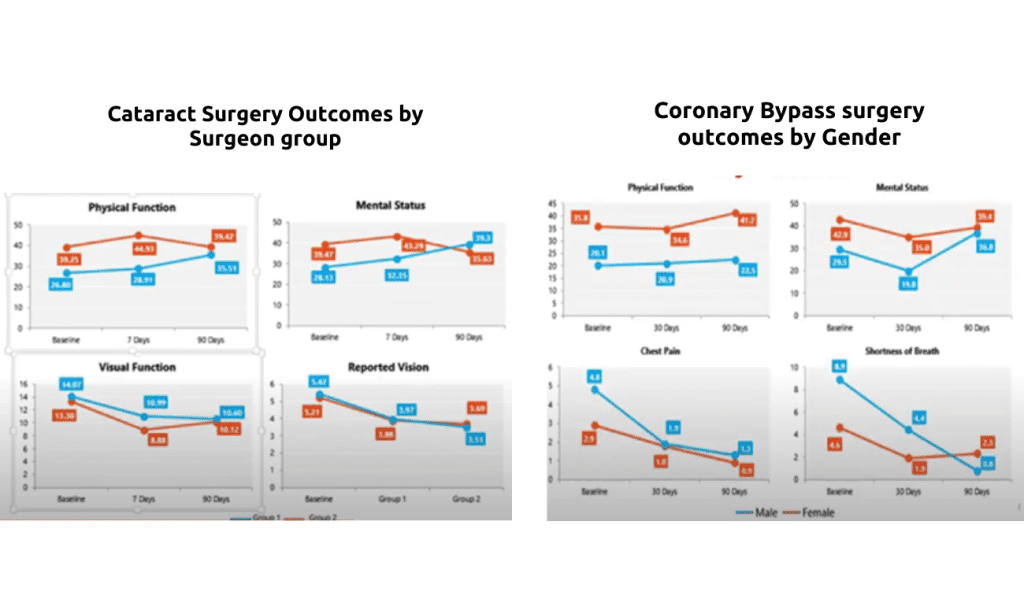
The Feed Forward Feedback approach was developed to encourage clinician participation, using real-time automated reports via the patient portal. Patients’ interest in dashboards and PROMs will be central to creating visual representations. Despite the challenges, progress is being made in collecting data from over 40 clinics. A professional conceptual framework, version two, has been developed for implementation, drawing from experiences in Boston and Sheba. The framework consists of phases – development, pilot, and system-wide rollout.
The primary challenge lies in obtaining patient reports to achieve high response rates. The second obstacle is obtaining clinician buy-in, which is equally crucial.
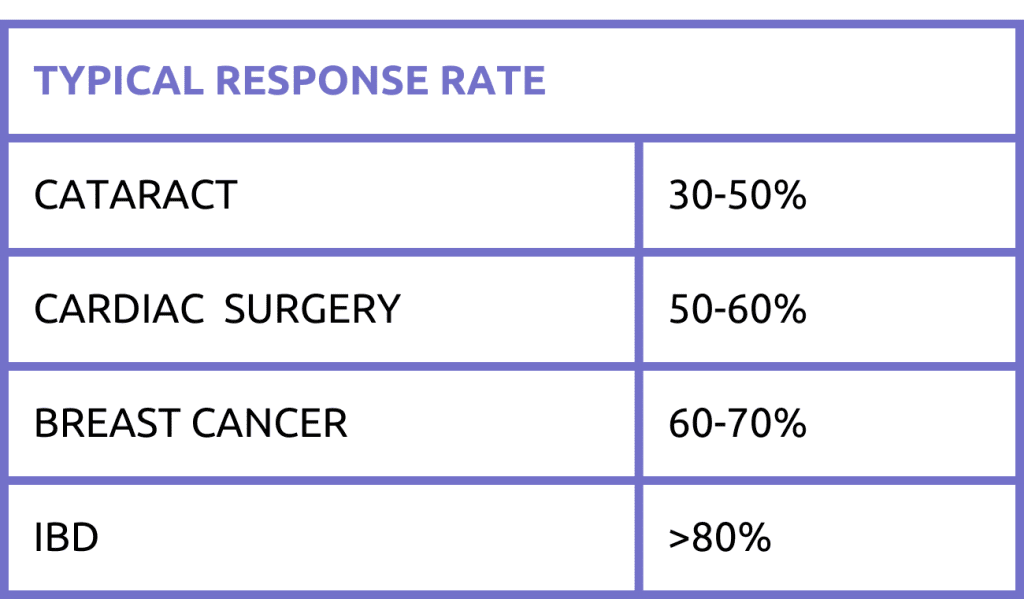
Problem data was collected from 40 different clinics and conditions over the past five years, including prostate cancer, coronary disease, and cataracts. Response rates vary by condition, with higher rates for inflammatory bowel disease due to tech-savvy younger patients. Cancer patients show higher compliance, while cataract response rates pose challenges due to their lower significance in patients’ lives.
The tool selection, target population definition, clinic workflows, and incentives for doctors and patients are addressed during development. Involving staff is crucial for their support. The conceptual framework for implementation consists of three phases: development, pilot, and system-wide rollout. The pilot phase involves identifying champions, collecting usability data, and integrating the tool into clinical decision pathways. Gradual physician buy-in is facilitated through discussions and case studies showcasing the tool’s value. The system-wide rollout incorporates PROMs into patient outcomes and population health for enhanced value.
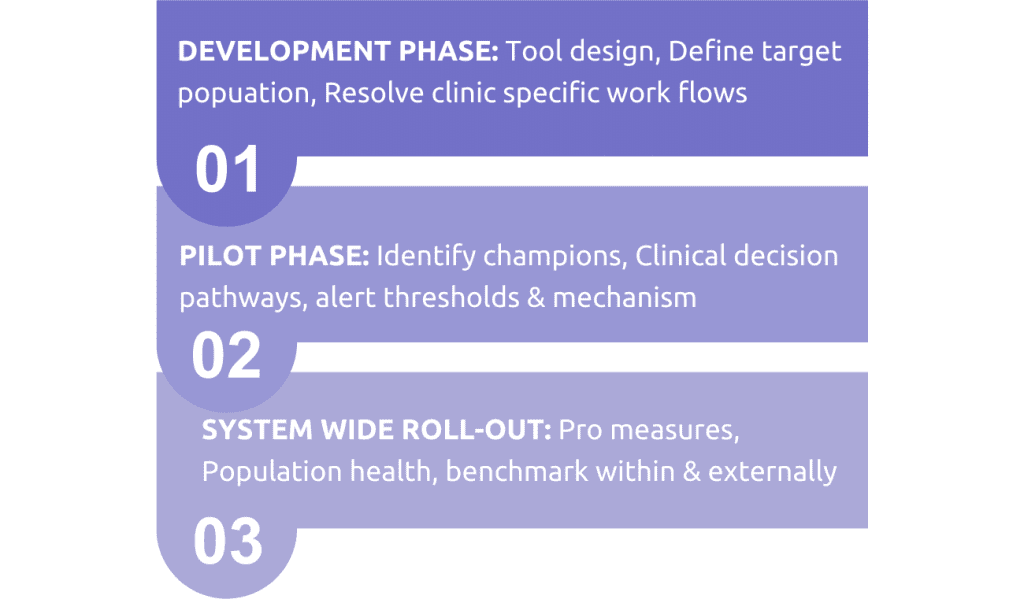
Benchmarking within and externally helps improve outcomes. The process takes three to five years, aiming for an outcome-based paradigm shift with PROMs at the core. Global data analysis is done by organizations like the International PROMs Collaborative and ICHOM. ICHOM covers various conditions and publishes timelines for data collection, making it a routine part of universal patient care.
1. The study proposes a comprehensive set of metrics for standardized outcome reporting in managing low back pain (LBP).
2. Spine care specialists used a modified Delphi process to select outcome metrics, including patient-reported measures, lumbar-related function, quality of life, work status, analgesic use, and complications. Follow-up intervals and risk stratification metrics were suggested. Although further validation is required, this set enables meaningful comparisons and quality improvement in LBP care, promoting high-value patient outcomes. [1] Clement, R. C., Welander, A., Stowell, C., Cha, T. D., Chen, J. L., Davies, M., … & FRitzell, P. (2015).
A proposed set of metrics for standardized outcome reporting in the management of low back pain. Acta orthopaedica, 86(5), 523-533. “In the future, scholars and colleagues will demand quantifiable results from physicians, not general comments on surgical quality outcomes, and consider those unable to provide such data as charlatans.” – Theodore Billroth.”Every hospital should follow every patient it treats to determine treatment success and investigate failures to prevent similar mistakes in the future. It is a crucial step we must take.” – Ernst Codman of BostonClement, R. C., Welander, A., Stowell, C., Cha, T. D., Chen, J. L., Davies, M., … & FRitzell, P. (2015). A proposed set of metrics for standardized outcome reporting in the management of low back pain. Acta orthopaedica, 86(5), 523-533.
Conclusion
Measuring patient-reported outcomes (PROs) is crucial for patient-centered care, improving care delivery and value. Successful implementation of PROMs requires a multi-modal data capture approach and emphasis on data quality. The Sheba Medical Center case study exemplifies effective PROMs program implementation. High-quality PROM data leads to personalized medicine, better patient outcomes, and enhanced population health.
Author
-

MD, MSc, (MHCM); Deputy Director General, Chief Medical Officer and Chief Innovation Officer, Sheba Medical Centre, Israel



